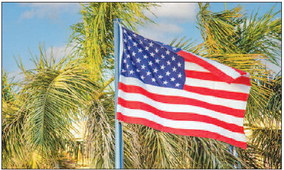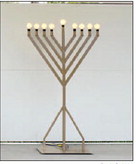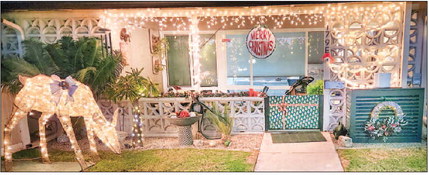Do’s and don’ts for displaying the Stars and Stripes this Flag Day


Public Law 94-344, known as the Federal Flag Code, contains rules for handling and displaying the U.S. flag. While the federal code contains no penalties for misusing the flag, states have their own flag codes and may impose penalties. The language of the federal code makes clear that the flag is a living symbol.
In response to a Supreme Court decision which held that a state law prohibiting flag burning was unconstitutional, Congress enacted the Flag Protection Act in 1989. It provides that anyone who knowingly desecrates the flag may be fined and/or imprisoned for up to one year.
However, this law was challenged by the Supreme Court in a 1990 decision that the Flag Protection Act violates the First Amendment free speech protections.
Important Things to Remember
• Traditional guidelines call for displaying the flag in public only from sunrise to sunset. However, the flag may be displayed at all times if it’s illuminated during darkness. The flag should not be subject to weather damage, so it should not be displayed during rain, snow and wind storms unless it is an all-weather flag.
• It should be displayed often, but especially on national and state holidays and special occasions.
• The flag should be displayed on or near the main building of public institutions, schools during school days, and polling places on election days. It should be hoisted briskly and lowered ceremoniously.
• When carried in procession with other flags the U.S. flag should be either on the marching right (the flag’s right) or to the front and center of the flag line. When displayed on a float in a parade, the flag should be hung from a staff or suspended so it falls free. It should not be draped over a vehicle.
• When displayed with another flag against a wall from crossed staffs, the U.S. flag should be on its own right (left to a person facing the wall) and its staff should be in front of the other flag’s staff.
• In a group of flags displayed from staffs, the U.S. flag should be at the center and the highest point.
• When the U.S. flag is displayed other than from a staff, it should be displayed flat, or suspended so that its folds fall free. When displayed over a street, place the union so it faces north or east, depending upon the direction of the street.
• When the U.S. flag is displayed projecting from a building, the union of the flag should be placed at the peak of the building unless the flag is at half-staff. When suspended from a rope extending from the building on a pole, the flag should be hoisted out, union first from the building.
• When flags of states, cities or organizations are flown on the same staff, the U.S. flag must be at the top (except during church services conducted at sea by Navy chaplains)
• The flag should never be draped or drawn back in folds. Draped red, white and blue bunting should be used for decoration, with the blue at the top and red at the bottom.
• The flag may be flown at half-staff to honor a newly deceased federal or state government official by order of the president or the governor, respectively. On Memorial Day, the flag should be displayed at half-staff until noon.
When the flag is worn out or otherwise no longer a fitting emblem for display, it should be destroyed in a dignified way, preferably by burning. The American Legion Post 326 in Leisure World has a receptacle at the LW Library where people can desposit worn flags, which will them be disposed of at a burning ceremony.
—from the U.S. Department of Veterans Affairs




